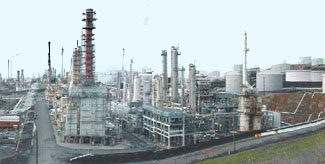Porphyromonas gingivalis: Difference between revisions
imported>Yelena Fuzaylova No edit summary |
imported>Yelena Fuzaylova No edit summary |
||
| Line 14: | Line 14: | ||
Domain:Bacteria | Domain:Bacteria | ||
Phylum:Bacteroidetes | Phylum:Bacteroidetes | ||
Class:Bacteroides | Class:Bacteroides | ||
Genus:Porphyromonas gingivalis | Genus:Porphyromonas gingivalis | ||
Revision as of 14:00, 1 April 2008
Articles that lack this notice, including many Eduzendium ones, welcome your collaboration! |
Classification
Higher order taxa
Domain:Bacteria
Phylum:Bacteroidetes
Class:Bacteroides
Genus:Porphyromonas gingivalis
Species
File:.jpg Genus species:Porphyromonas gingivalis
Description and significance
Porphyromonas gingivalis is an anaerobic, gram negative bacterium that can be found within the mouth of an individual. It is observed to be non-motile and rod-shaped. This bacterium is the principal source of periodontal disease. It has been found that in addition to causing human infections, this bacterium also causes much of the antibiotic resistance problems found today. (http://www.pgingivalis.org/aims.htm). The way which it operates is very unique, since it is a gram negative bacteria, it can attach to the subgingival coating of the tooth, and it will substitute the gram positive bacteria that is originally there with its own thus causing an inflammation which will disengage the gums from the teeth. When colonized on blood agar it forms black spots. It is important to sequence the genome of this organism because it is found in many locations within the body not only in the oral cavity also in the gastrointestinal tract, respiratory tract and in the colon, this has many consequences. It has been ascertain that periodontal disease is associated with cardiovascular diseases. This bacterium is associated with Treptonema denticola and Bacteroides forsythus (http://microbewiki.kenyon.edu/index.php/Porphyromonas_gingivalis)
Genome structure
The genome of p. gingivalis is circular and its origin of replication is located at oriC which is juxtaposed by the genes dnaA and PG1949. The guanine and cytosine nucleotides make up approximately 49%. At the present, 2,015 genes have been acknowledged with a total of 23,43,479 nucleotides. It has been found that the genome of p. gingivalis is similar to that of Bacteroides thetaiotaomicron, and B.fragilis within the Cytophaga-Flavobacteria-Bacteroides genome. In addition, it closely resembles the genomes of Chlorobium tepidum, and thus this demonstrates the notion that the phyla of Chlorobia and Cytophaga-Flavobacteria-Bacteroides are associated with one another. It has been discovered using genome analysis that this bacterium can metabolize a range of amino acids which will form different metabolic end products that are lethal to the host which is usually human, as well as harming the host’s gingival tissues, thus causing the expansion of periodontal disease. (http://www.ebi.ac.uk/2can/genomes/bacteria/Porphyromonas_gingivalis.html) It is found that the size of the genome of P. gingivalis is 2.34 mega bases. In addition, the sequencing of the entire genome is important to be able to determine if there are more medical effects of the bacterium in addition to periodontal disease. Researchers want to be able to establish mechanisms for the virulence as well as vaccines. The goals of this project include, the DNA sequence for the genome; analyzing and interpreting the sequence for the W83 strain; integrate the information that was obtained by the interpreted sequences and compare it with the experimental data from the P. gingivalis research community; finally the purpose of the genome sequences is to be able to make clones, reagents, and information to the research community available. (http://www.pgingivalis.org/aims.htm)
Cell structure and metabolism
Describe any interesting features and/or cell structures; how it gains energy; what important molecules it produces.
Ecology
Describe any interactions with other organisms (included eukaryotes), contributions to the environment, effect on environment, etc.
Pathology
How does this organism cause disease? Human, animal, plant hosts? Virulence factors, as well as patient symptoms.
Application to Biotechnology
Does this organism produce any useful compounds or enzymes? What are they and how are they used?
Current Research
Enter summaries of the most recent research here--at least three required
